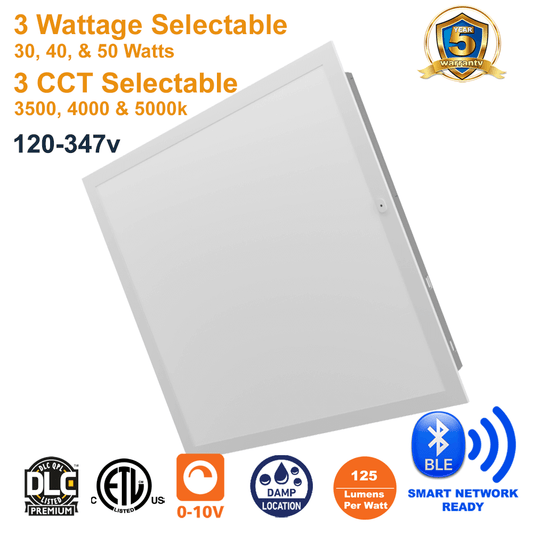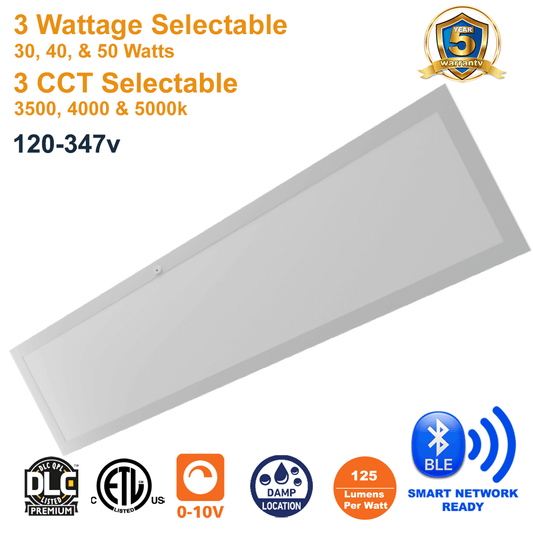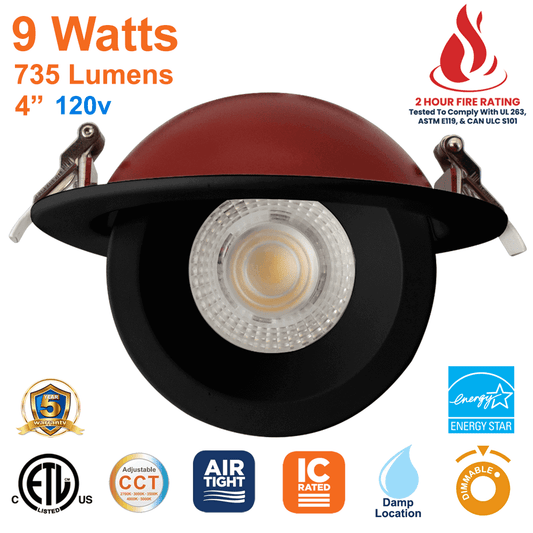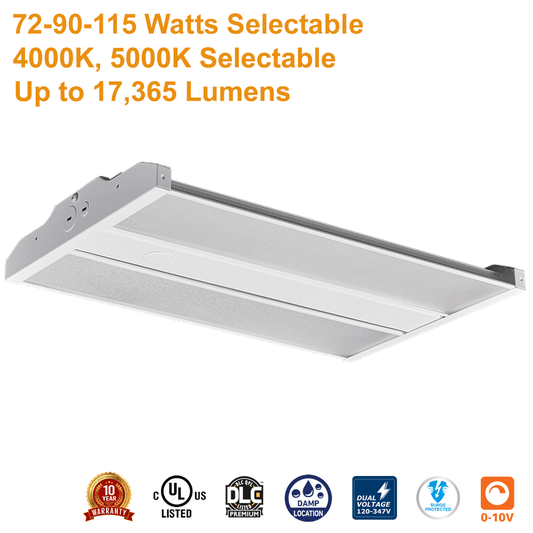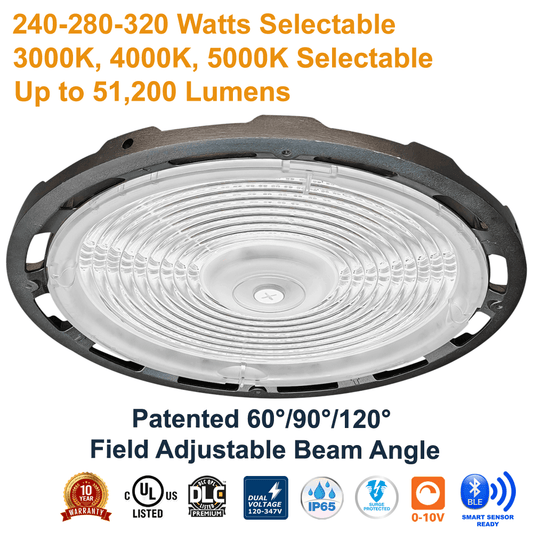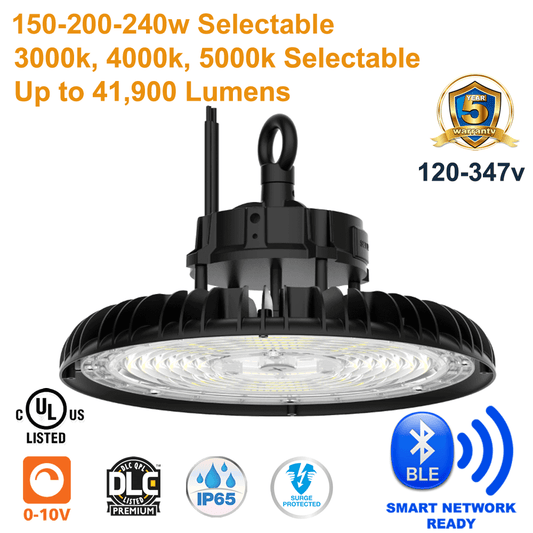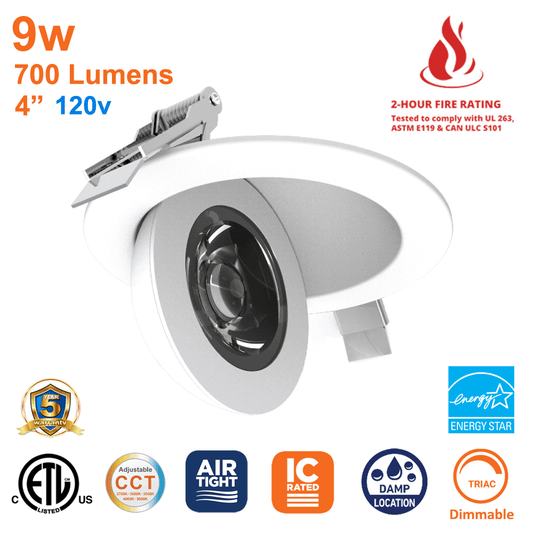Choosing the right downlight is more than just picking between styles — it impacts safety, efficiency, long-term costs, and even aesthetics. In this article, we break down the core differences between Integrated LED Downlights and GU10 Fire Rated Downlights so you can make an informed decision for your next project. You’ll learn:
-
Which downlight option is more energy efficient and long-lasting
-
How heat dissipation and failure rate affect reliability
-
Why fire rating compliance is non-negotiable
-
The true cost of replaceable vs integrated units
-
When compact design and shallow depth really matter
-
How to choose based on installation convenience, lighting flexibility, and aesthetics
Whether you're working on a full renovation, a retrofit, or simply upgrading your lighting, this guide will give you the clarity to choose confidently.
The Great Downlight Debate: Integrated vs GU10
Lighting has come a long way since the days of halogens. Today, builders, electricians, and homeowners are faced with a familiar yet complex question: Integrated LED Downlights or GU10 Fire Rated Downlights?
Both options offer excellent performance in modern lighting design — but they shine in very different ways.
“Think of it like choosing between a sealed, finely-tuned machine vs a modular, upgradeable toolkit.”
Let’s explore each option through the lens of real-world application, performance, and long-term satisfaction.
What is a Fire Rated Downlight — and Why It Matters
Before diving into the tech specs, let’s address the elephant in the ceiling: fire safety.
A fire rated downlight is designed to maintain the integrity of a ceiling in the event of a fire. When installed into a fire-rated ceiling (such as in apartment buildings or between floors), the fixture must help prevent flames from spreading through the hole it creates. The rating (often 30, 60, or 120 minutes) tells you how long the unit can resist fire.
At LED Network, all our recessed downlights in the fire-rated category meet or exceed UL263 2-hour fire ratings, providing confidence and compliance for both residential and commercial installs.
Integrated LED Downlights: Performance Without the Fuss
Integrated LED downlights are all-in-one units: the LED light source, housing, driver, and heat management system are all built into a single unit.
Why Go Integrated?
-
Superior Heat Dissipation
Integrated fixtures are engineered with advanced heat sinks, which significantly reduce the chances of LED failure due to overheating — the number one cause of premature burnout. -
Longer Lifespan
Most integrated units run between 25,000 to 40,000 hours, making them an excellent choice for areas that demand consistent, long-term lighting. -
Compact Design
Perfect for ceiling voids with tight clearance. Our 4-inch Fire Rated Pot Light, for example, has a shallow profile and still delivers 800 lumens of consistent illumination. -
Modern Aesthetics
Integrated downlights offer a clean, flush finish and are available in multiple finishes and colour temperatures, such as 3000K (warm white) to 5000K (daylight).
For modern builds and long-term performance, integrated is like a sealed luxury watch — less maintenance, more elegance.
But What About Replaceability?
One of the most commonly cited downsides of integrated LEDs is that you can’t simply replace the bulb. If the LED fails, you’ll have to replace the entire fixture.
However, the failure rate is so low, especially with quality brands, that the trade-off is often worth it. Plus, modern connectors like plug-and-play wiring systems make swapping out an old fixture incredibly easy — no rewiring needed.
Explore low-profile options like our 3-inch Fire Rated Pot Light — ideal for tight spaces and fire-rated ceilings.
GU10 Fire Rated Downlights: Modularity and Flexibility
GU10 downlights offer a modular approach to lighting. The fixture and the bulb are two separate components, giving you more lighting project flexibility.
Want to try out a different beam angle or colour temperature? Swap the bulb. Want to test smart controls? Try a Smart GU10 lamp.
This flexibility makes GU10 downlights attractive to homeowners and designers who like the option to adjust or upgrade components over time.
We'll explore GU10 performance, fire-rated compatibility, and install tips in the next part of this article, including whether modularity is truly more cost-effective in the long run.
GU10 Fire Rated Downlights: Flexibility Meets Familiarity
For those who value versatility and control, GU10 fire rated downlights offer an entirely different kind of appeal. Unlike integrated fixtures, these downlights use replaceable LED lamps, meaning the core light source can be swapped without touching the housing.
This setup makes them popular among:
-
Renovators retrofitting old halogens
-
Designers testing multiple lighting moods
-
Electricians installing in phased or evolving projects
But are they right for your space? Let’s dig into the pros and cons.
Why Choose GU10?
1. Modularity = Flexibility
You can easily change beam angles, upgrade to newer COB or SMD GU10 lamps, or switch from warm white to cool white without replacing the entire fixture. This is especially useful in multi-room renovations or commercial installs where light preferences may evolve.
2. Initial Cost Savings
GU10 fixtures tend to be more budget-friendly upfront. If you're running large volumes of installs or need a cost-effective lighting solution, the lower entry price might appeal. However, as we’ll discuss below, lifetime cost may tell a different story.
3. Smart Compatibility
Today’s market offers a variety of Smart GU10 lamps that integrate with lighting control systems (e.g., Alexa, Google Home), offering voice-activated dimming, scheduling, and color changes — no additional wiring required.
The Drawbacks of GU10
While GU10s win on modularity, they also come with caveats:
-
Higher Failure Rate
Unlike integrated downlights that are optimized for heat dissipation, GU10 fixtures often sit inside traditional fire can housings that can trap heat. Unless you're using ventilated models, excess heat can cause LED failure far sooner. -
Less Efficient Thermal Design
Because you’re pairing two separately engineered components (lamp + fixture), you often don’t get the tightly optimized thermal performance that integrated designs offer. This matters if your fixtures are on for extended periods. -
More Maintenance
Over time, you’ll likely find yourself replacing GU10 lamps more frequently — especially in high-usage areas like kitchens or commercial spaces. That means more time on ladders and higher long-term costs.
Fire Safety with GU10 Fixtures
It’s crucial to pair GU10 fixtures with fire rated housings, especially when installing in ceilings between floors. Look for models that are certified to UL263 or equivalent standards.
If you're comparing integrated vs GU10 purely on fire protection, both can comply — but installation quality and certification are non-negotiable. A great option in our fire rated range that rivals GU10 performance is our 6-inch Fire Rated Pot Light – 1100 Lumens, which maintains both fire integrity and high lumen output.
Choosing the Right Option for Your Project
Let’s bring it together with a high-level breakdown. Below is a comparison that factors in more than just bulb replacement — it takes into account safety, longevity, aesthetics, and long-term maintenance.
| Feature | Integrated LED Downlights | GU10 Fire Rated Downlights |
|---|---|---|
| Lifespan | 25,000–40,000 hrs | Varies (8,000–25,000 hrs) |
| LED Failure Rate | Very low | Higher (especially with poor ventilation) |
| Modularity | Fixed | High – lamps are replaceable |
| Heat Management | Optimized, built-in heat sink | Dependent on housing ventilation |
| Installation | Quick plug-in options | May need lamp alignment or trimming |
| Ceiling Compatibility | Great for shallow voids | Some models are deeper |
| Lighting Flexibility | Limited (fixed colour temp & angle) | High – customizable with GU10 lamps |
| Initial Cost | Higher | Lower |
| Long-term Cost | Lower (less maintenance) | Potentially higher (lamp replacements) |
| Aesthetic Design | Sleek, modern | Classic or minimal depending on trim |
Ideal Use Cases
Choose Integrated LED Downlights if:
-
You're aiming for a sleek, modern finish
-
You have shallow ceiling voids
-
You want low-maintenance, long-life performance
-
You're working on a new build or full renovation
Choose GU10 Fire Rated Downlights if:
-
You want the freedom to adjust lamps over time
-
You're doing a retrofit or working with older housing
-
You’re experimenting with smart lighting systems
-
You have specific beam angles or lighting needs
Compliance and Safety
Both downlight types can meet fire safety regulations — but be sure they carry certifications like UL263 for fire resistance and cETL or ETL for North American electrical compliance.
LED Network only offers fully certified fire rated pot lights like these, ensuring that both performance and peace of mind come as standard.
Installation & Maintenance: Which Option Wins on Convenience?
When choosing between Integrated LED and GU10 fire rated downlights, the ease of installation is a key consideration — especially for contractors, builders, and even savvy DIYers.
Integrated Downlights: Quick and Clean Installs
Modern integrated LED downlights are built with plug-and-play wiring connectors, which eliminate the need for complicated rewiring. This means:
-
Faster installations
-
Fewer wiring errors
-
Easier replacements if needed
For example, IC-rated units like our 3-inch Fire Rated LED Pot Light are designed to be safe even when insulation is present, making them an excellent choice for attics or upper floors.
Also, because there’s no need to source a separate GU10 lamp, everything you need is already built into the fixture. This streamlines not only the install but also ongoing maintenance — set it and forget it.
GU10 Downlights: Slightly More Involved
GU10 systems typically require a separate bulb and housing, which introduces a few extra steps:
-
Aligning and securing the lamp into the fitting
-
Verifying compatibility between the fixture and bulb (beam angle, wattage, etc.)
-
Testing for dimmable compatibility
However, the upside is flexibility — you can swap out the lamp for a smart version, a warmer colour temperature, or a narrower beam angle if your lighting needs change.
Still, it’s worth noting that many GU10 installations require larger ceiling cutouts, and some fire can housings may demand more clearance in the ceiling void — potentially complicating installs in tight spaces.
Aesthetics and Design Finishes
When it comes to how your ceiling looks, both integrated and GU10 downlights offer a wide range of finishes to complement your decor.
However, integrated downlights tend to offer a more seamless, flush-mount look. They’re designed as a cohesive unit, meaning the trim and LED are engineered to deliver balanced optics and consistent illumination across every fixture.
This makes them a top choice in modern, minimalist environments where clean lines matter.
Meanwhile, GU10 downlights typically use interchangeable bezels or trim rings. While this offers customization, it can sometimes result in mismatched finishes or uneven beam spreads if not carefully selected.
If you're after that polished, architectural-grade finish, an integrated model like our 6-inch Fire Rated Pot Light with 1100 Lumens will deliver both style and brightness with ease.
Compliance with Building Regulations
Whether you’re a contractor quoting a job or a homeowner DIYing with permits, compliance matters.
Both downlight types must meet:
-
UL263 or CAN/ULC S101 for fire safety
-
cETL, ETL, or CSA certification for electrical code compliance
-
IC rating where insulation is involved
-
Wet or Damp location ratings in bathrooms, kitchens, or soffits
At LED Network, every fire-rated product is rigorously tested to meet 2-hour fire ratings, ensuring building regulation compliance across Canada and beyond.
The Final Verdict: Which Should You Choose?
Choosing between Integrated LED and GU10 Fire Rated Downlights isn’t about which is better — it’s about what’s right for your space, budget, and long-term expectations.
Here’s a simplified guide:
Choose Integrated LED Downlights if you:
-
Want long-term reliability with minimal maintenance
-
Need to install in tight ceiling voids
-
Prefer a sleek, modern look
-
Value plug-and-play convenience
-
Prioritize fire rating and code compliance
Choose GU10 Fire Rated Downlights if you:
-
Prefer lighting flexibility and bulb replacement
-
Are retrofitting an existing setup
-
Want to experiment with smart lighting options
-
Are on a tighter upfront budget
-
Don’t mind occasional lamp replacements
💡 Pro Tip: For most new construction and renovation projects, especially in high-risk areas like ceilings between floors or multi-family dwellings, integrated fire-rated downlights offer the best combination of performance, aesthetics, and safety.
Shop Fire Rated Pot Lights at LED Network
We’re proud to manufacture and supply our own line of premium fire rated pot lights that combine:
-
High lumen output
-
5 CCT selectable color temperatures
-
Dimmable drivers
-
IC-rated, wet-rated designs
-
Certified 2-hour fire rating
Explore our full range of fire rated pot lights and see why LED Network is trusted by contractors and homeowners across Canada.
Thanks for reading! Need help with product selection or lighting layouts? Reach out to our team or explore more resources on LEDNetwork.ca.
Frequently Asked Questions: Integrated LED vs GU10 Fire Rated Downlights
1. Can I use GU10 bulbs in an integrated LED fixture?
No. Integrated LED downlights have the LED chip built directly into the fixture — they do not accept separate bulbs like GU10s. The only replaceable unit is the entire downlight itself.
2. Are all integrated LED downlights fire rated by default?
Not necessarily. While many integrated models, like those at LED Network, are fire rated, you should always check the product specifications. Fire rating depends on how the fixture is built and certified, not simply whether it's integrated.
3. Which option is better for sloped ceilings or vaulted spaces?
GU10 downlights may offer more tiltable or gimbal designs, making them more suitable for angled ceilings. However, some integrated fixtures also include adjustable trims—it comes down to product design, not the bulb type alone.
4. Is there a noticeable difference in light quality between integrated and GU10 options?
There can be. Integrated LEDs often feature engineered optics and reflectors for a more uniform beam. With GU10s, light quality depends heavily on the bulb used — some may flicker or have uneven beam spread.
5. Which type is easier to dim?
Both types can be dimmable, but integrated LEDs usually offer smoother dimming curves with compatible drivers. GU10 dimming depends on the bulb and dimmer compatibility. Always verify with your dimmer spec sheet.
6. Can I mix both types in the same room?
Yes — technically, you can. However, be aware of potential mismatches in colour temperature, lumen output, and aesthetic finish. If consistency is important (e.g., kitchens or open-plan areas), stick to one type for uniformity.
7. What happens when an integrated LED fails within warranty?
Most integrated LEDs from reputable brands like ours come with a manufacturer’s warranty. If the LED fails prematurely, the entire unit is typically replaced at no cost, provided installation was compliant and within warranty terms.
8. Are either options suitable for outdoor use or soffits?
Yes — as long as the downlights are wet-rated or IP65+. Many of our integrated fire rated pot lights are suitable for exterior soffits or bathrooms, but again, always confirm the IP rating in the product specs.
9. Do integrated downlights support motion sensors or automation systems?
Yes. Integrated downlights can be wired into motion detectors, daylight sensors, or automation systems, just like GU10s — the key is ensuring the driver and control module are compatible.
10. What should I consider when choosing beam angles for each type?
GU10 bulbs often allow you to choose from a range of beam angles (e.g., 24°, 36°, 60°), giving you more flexibility for spotlighting or wide-area coverage. Integrated LEDs typically have a fixed beam angle, so it's important to choose the right model for your layout.





